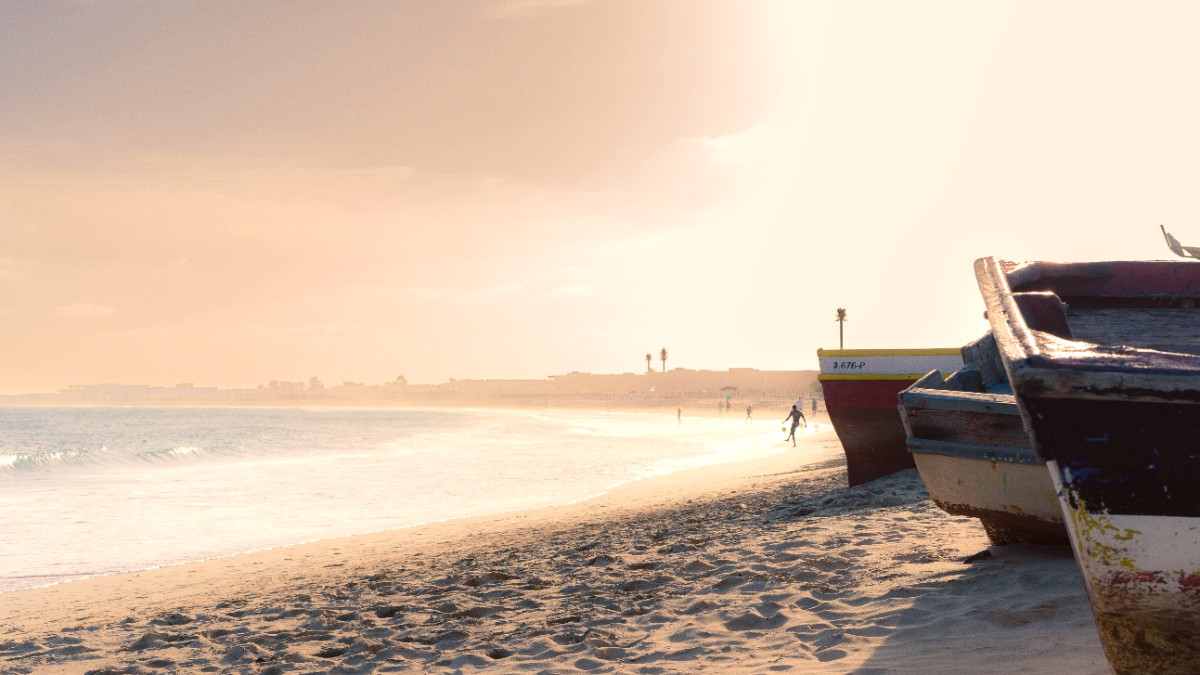
Cabo Verde
Historically, the islands served as a trade route, a rich blend of flavors and ingredients from various cultures results. Seafood is a prominent role due to the islands' location, alongside staple starches like corn and root vegetables. The culinary landscape mirrors centuries of cultural exchange and adaptation.
Expect fresh fish (tuna, wahoo, grouper, barracuda) and other seafood (lobster, octopus). Staples include corn, beans, sweet potato, cassava, rice, and plantains. Tropical fruits like papaya, mango, and banana are refreshing accents. Common seasonings include garlic, onion, bay leaf, peppers, and olive oil. Spicy sauces (molho picante) often come on the side. Focus remains on natural ingredient flavors, specifically fresh Atlantic catches.
A light meal, often consisting of bread, cheese, and coffee. Some places may offer eggs or local pastries.
Often the main meal of the day, a hearty affair that can include stews, grilled fish, or meat dishes with sides.
Usually lighter than lunch, but can still be substantial, especially in tourist-focused restaurants. An opportunity to enjoy fresh seafood or local specialties.
The national dish. This slow-cooked stew features corn (hominy), beans, and various vegetables. Fish or meat (pork, sausage, chicken) is often an ingredient. A "Cachupa Rica" has meat or fish, while "Cachupa Pobre" is vegetarian.
Find in local eateries in Sal Rei, often for breakfast or lunch.
Fresh grilled fish (tuna, wahoo, grouper, barracuda). Simply seasoned and often comes with rice, boiled potatoes, and a fresh salad.
Available at most local restaurants and beachside shacks. Look for "Peixe do Dia."
Grilled lobster, a popular indulgence. Baked codfish, reflects Portuguese influence, often served with potatoes and olive oil. It is a comforting, savory flavor.
Many waterfront restaurants in Sal Rei have lobster. Codfish is found in local eateries.
Pastel is a fried pastry (like an empanada), often with fish or meat. Bolo de Milho is dense, slightly sweet cornbread.
Sweet papaya preserve. Local goat cheese with fruit preserve (papaya/quince); this combination is a delightful sweet and savory contrast.
Limited on Boa Vista, mainly within larger, upscale resorts. Some resorts hold specialty à la carte restaurants with refined atmosphere and gourmet menus. Reservations are typically necessary.
Sal Rei holds numerous mid-range restaurants. They serve a mix of local Cape Verdean cuisine and international dishes, specifically Italian due to strong Italian tourist presence. Some European options also exist.
Small local "tascas" or "restaurantes" in Sal Rei and villages present authentic, affordable meals. Often hearty portions of traditional dishes. Street vendors sell pastries and snacks.
In Sal Rei, it sells fresh produce, fish, and some local snacks. Not a formal food hall with prepared meals, but a great place to buy ingredients for self-catering.
Offers fresh local goods.
Italian restaurants are common. Some establishments offer basic European dishes. Large resorts often feature multiple restaurants with extensive international buffets. If craving something familiar, these options are available.
Variety for diverse tastes.
Dedicated restaurants are challenging to find. "Cachupa Pobre" (vegetarian cachupa) is a traditional local option. Restaurants can often prepare vegetable dishes upon request.
Awareness is generally low outside major resorts. Clear and polite communication of needs helps. Stick to naturally gluten-free foods.
Options are very limited. Plan for self-catering or choose resorts able to accommodate special requests with advance notice.
Self-catering and direct communication with staff are best. Consider carrying a Translation card in Portuguese for allergies.
A particular highlight. They feature freshly grilled fish, often caught that day, presenting a rustic and authentic dining experience with a direct ocean view.
Embodies the island’s relaxed pace.
Enjoying a simple, perfectly grilled fish with your feet in the sand is a memorable Boa Vista experience.
Focus on fresh ingredients.
Meals are often social affairs, enjoyed with family and friends. Dining out is a relaxed experience, reflecting the island's "no stress" philosophy.
Boa Vista's strong coastal location means a particular emphasis on fresh seafood. Restaurants frequently feature the day's catch, cooked simply to highlight its natural taste.
Finding dedicated vegetarian or vegan restaurants is challenging. However, managing these diets is possible. "Cachupa Pobre" (vegetarian cachupa) is a traditional local option. Restaurants often prepare vegetable-based dishes with rice or potatoes upon request.
Awareness of specific allergens like gluten is generally low outside major resorts. Clear and polite communication of needs helps. Stick to naturally gluten-free foods like grilled fish, rice, boiled potatoes, and fresh vegetables.
Options for halal and kosher food are very limited. Cabo Verde is not a significant destination for these dietary preferences. Travelers with these needs plan for self-catering, buying suitable ingredients from markets.
Communicate directly with hotel and restaurant staff in advance or before ordering. They may assist with dietary needs.
Direct communication is best.
A Portuguese phrasebook with dietary terms will prove useful.
Helpful for specific requests.
Informal cooking demonstrations for traditional dishes like Cachupa or fish preparations may be available. Inquire locally about these.
Food tours may occur as part of a larger island tour, stopping at local eateries to sample specialties.
Beachfront shacks are a particular highlight, with freshly grilled fish and direct ocean views. These casual spots exemplify the island’s relaxed pace.
Embrace the freshness of the sea. Boa Vista's prime culinary asset is its abundant, daily caught seafood. Choose grilled fish for an authentic taste of the island.